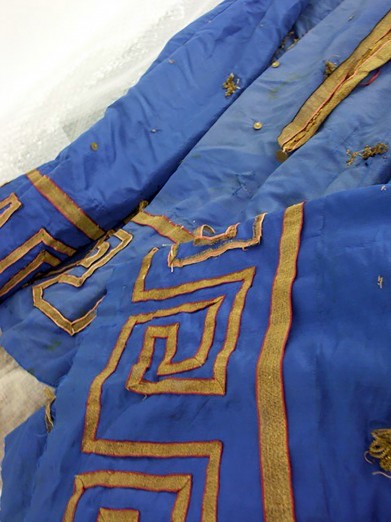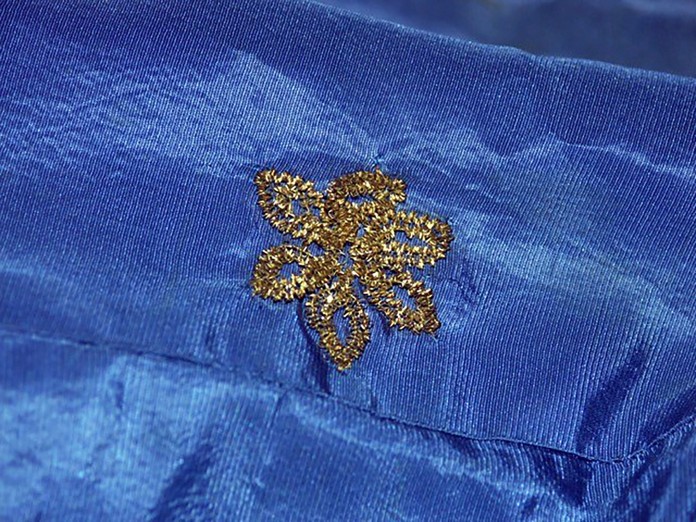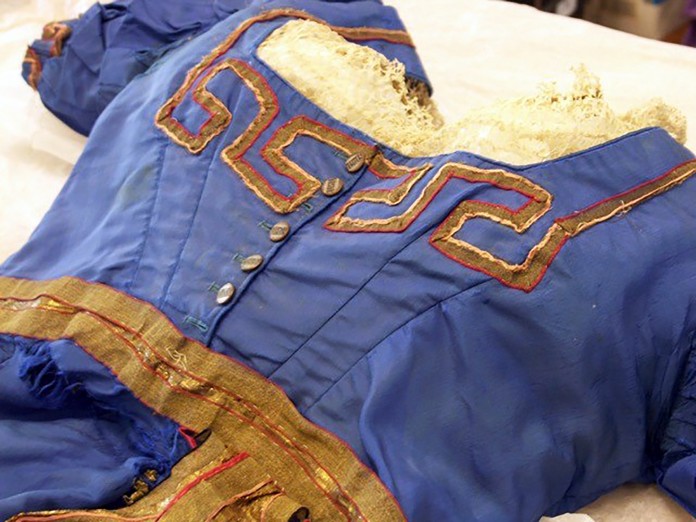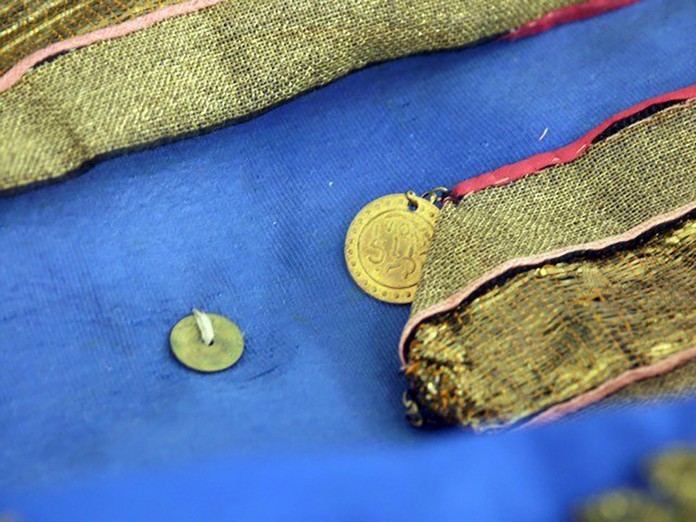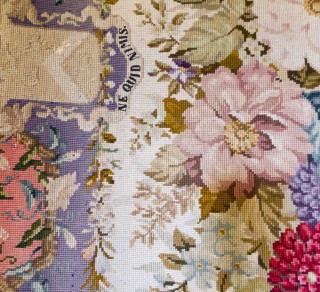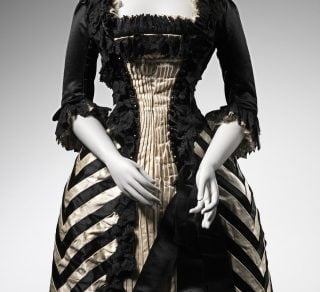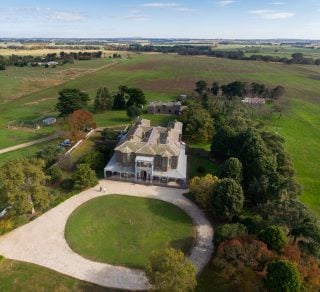Elizabeth Austin, of Barwon Park, wore this costume to a fancy dress ball at the Exhibition Buildings given in honour of H.R.H. the Duke of Edinburgh, Monday 23rd December 1867.
Mrs. Austin attended the ball as an Athenian Lady and her husband Thomas went as a Freemason. They mixed with a huge crowd gathered to see Prince Alfred, Duke of Edinburgh, second son of Queen Victoria and Prince Albert. According to newspaper reports the caterers provided for 8000 guests.
The Prince was the first British royal to visit Australia; he was also the target of an assassination attempt in Sydney. In Victoria, he was feted by notables of the colony, these events were often chaotic as the public scrambled to get a view of H.R.H. He was able, nonetheless, to relax on the country property of the Austin family. It was during this visit that Thomas Austin released rabbits for the Prince to shoot. This release was the start of a national wide rabbit plague, which Australia is still trying to bring under control.
Elizabeth Austin’s choice of ‘An Athenian Lady‘ for her costume was in keeping with a repertoire of suggested designs deemed appropriate for women of her class. The costume was not a Greek chiton, but a contemporaneous interpretation. The dress has a short straight bodice over a crinoline with a slight train. An Athenian Lady’s costume followed a convention throughout the mid to late nineteenth-century. It was made from a vivid blue fabric, decorated with a red trim and worn with a white veil. Details could include gold ornamentation, Greek key designs and coins, but the silhouette followed the fashions of the day.

